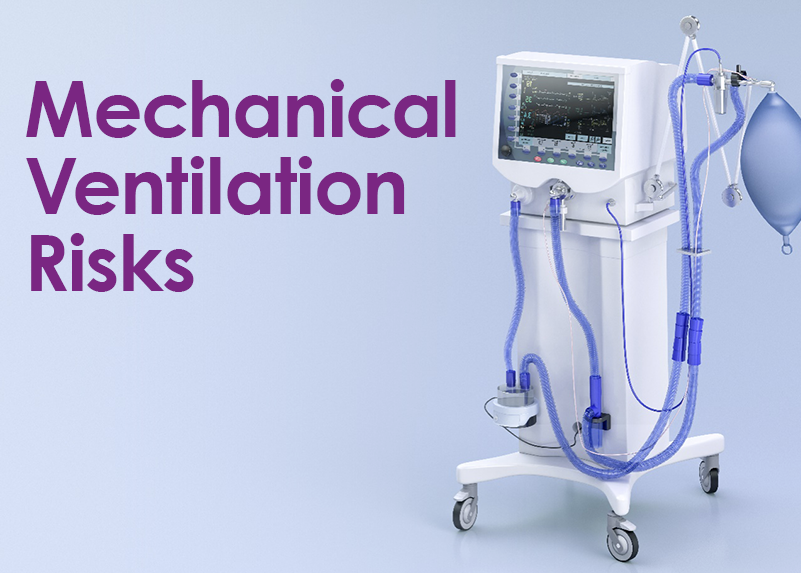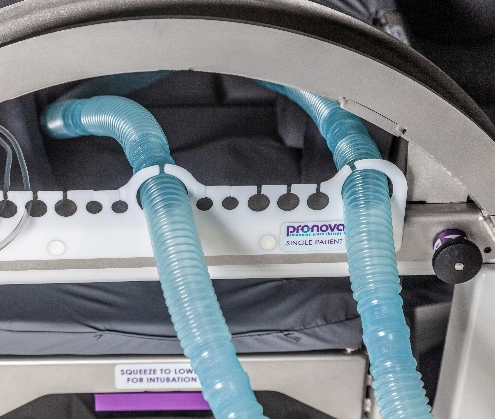Did you know that while mechanical ventilation is a lifesaving strategy for many patients with respiratory failure, it also carries risks for major complications and poor outcomes?
 Respiratory failure is a potentially life-threatening condition that affects about 1.1 million patients per year, with an average hospital length of stay of 10.5 days and hospital charge of $158,000, and is only increasing in incidence.4 Mechanical ventilation provides supportive therapy for patients with acute respiratory failure by providing oxygenation support and the opportunity to rest respiratory muscles. Ventilator use is one of the most common interventions for patients in the ICU.2
Respiratory failure is a potentially life-threatening condition that affects about 1.1 million patients per year, with an average hospital length of stay of 10.5 days and hospital charge of $158,000, and is only increasing in incidence.4 Mechanical ventilation provides supportive therapy for patients with acute respiratory failure by providing oxygenation support and the opportunity to rest respiratory muscles. Ventilator use is one of the most common interventions for patients in the ICU.2
While this intervention is often necessary for patients experiencing acute respiratory failure, it also comes with risks such as ventilator-associated pneumonia, sepsis, acute respiratory distress syndrome (ARDS), pulmonary embolism, barotrauma, pneumothorax, the inability to discontinue mechanical ventilation, and pulmonary edema.1,3
These potential complications can contribute to the need for more mechanical ventilation days, longer hospital and ICU lengths of stay, and increased healthcare costs. These risks also increase the potential for disability and death.1 However, prone (face-down) positioning has been shown to help reduce some of these risks.5

PronovaO2 Critical Line Management System
While mechanical ventilation is often a necessary intervention in the ICU, it is important to consider the risks associated with ventilator use and pursue ways to reduce these risks. Some mechanically ventilated patients may greatly benefit from prone positioning.
The Pronova-O2 Automated Prone Therapy System provides an efficient method for positioning critically ill patients as well as a safe way to stow and manage critical lines during position changes. For additional information on Pronova-O2, or to pre-order, please visit turnmedical.com or call 1-855-275-8876.
References
- Ventilatory Associated Event (VAE). January 2021. National Healthcare Safety Network.
- Metnitz, P. et. al. (2009). Epidemiology of Mechanical Ventilation: Analysis of the SAPS 3 Database. Intensive Care Medicine, 35(816-825). Doi 10.1007/s00134-009-1449-9.
- Patient Education Information Series: Mechanical Ventilation. April 2020. American Thoracic Society. Retrieved September 28, 2021 from mechanical-ventilation.pdf (thoracic.org).
- Kempker, Jordan A. MD, MSc1; Abril, Maria K. MD1; Chen, Yunyun MSPH2; Kramer, Michael R. PhD3; Waller, Lance A. PhD2; Martin, Greg S. MD, MSc1 The Epidemiology of Respiratory Failure in the United States 2002–2017: A Serial Cross-Sectional Study, Critical Care Explorations: June 2020 – Volume 2 – Issue 6 – p e0128 doi: 10.1097/CCE.0000000000000128
- Guerin, C., Reignier, J., et al. (2013). Prone Positioning in Severe Acute Respiratory Distress Syndrome. N England J Med 2013; 368:2159-2168, DOI: 10.1056/NEJMoa1214103.






